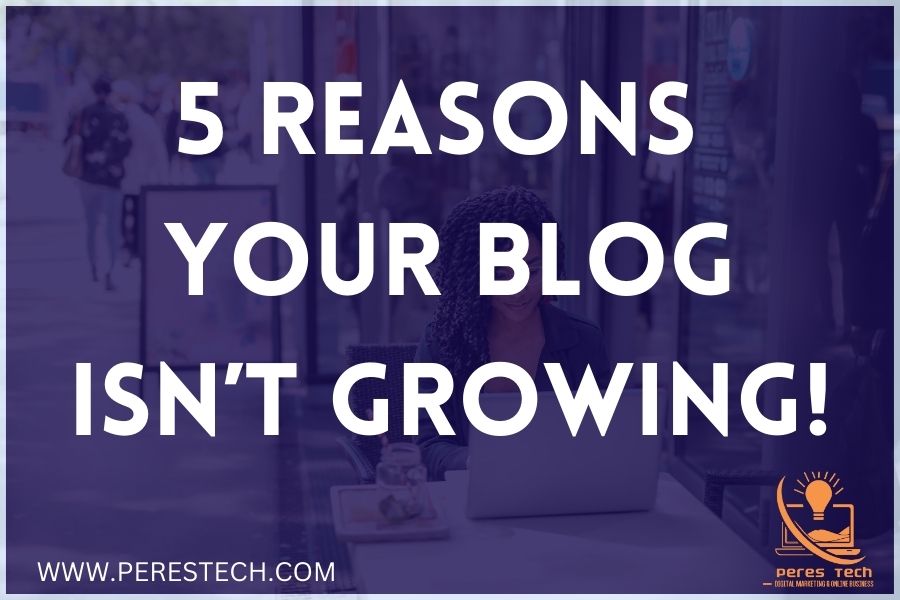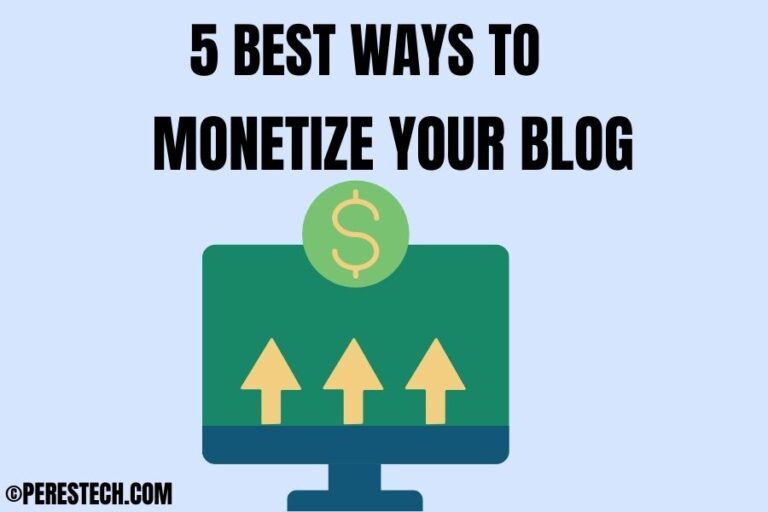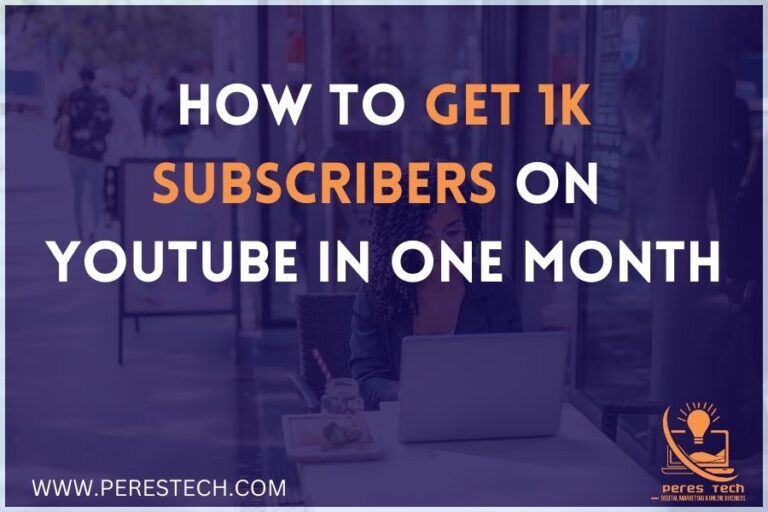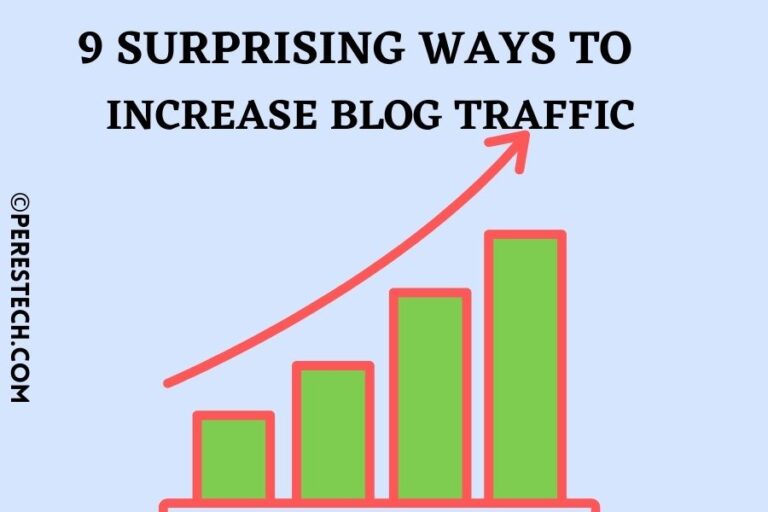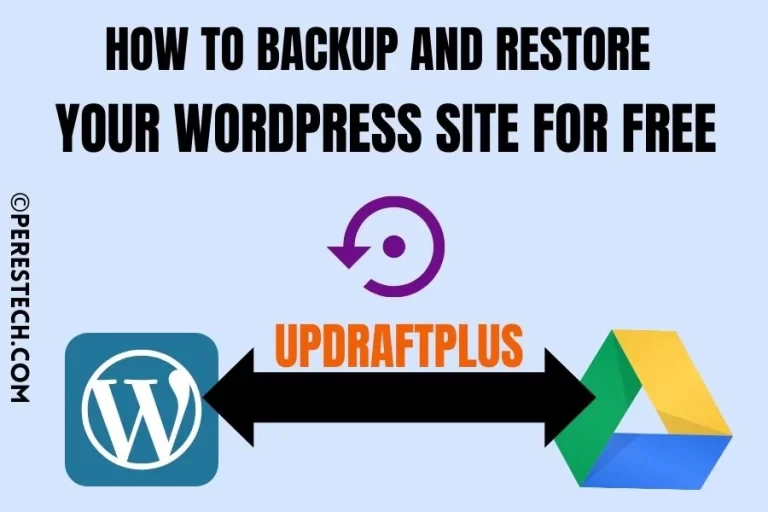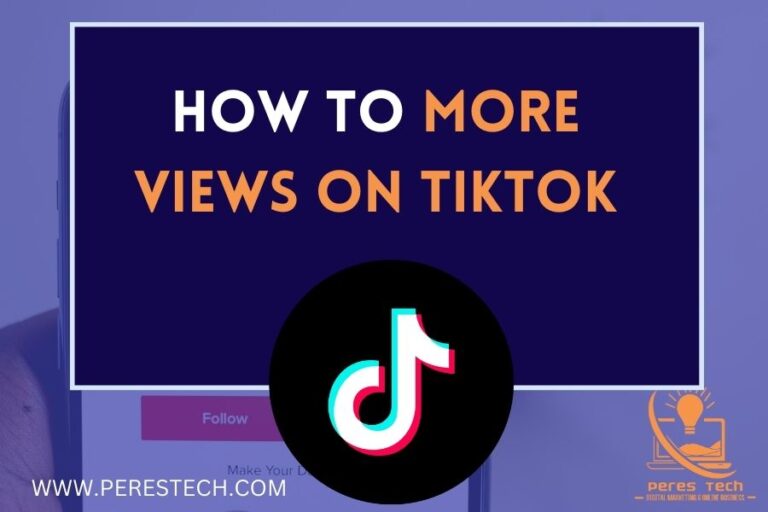The Top 5 Reasons Your Blog Isn’t Growing
It’s such an exciting moment when you first get into blogging, mostly after reading so many success stories with actual proof which shows the positive side of blogging.
But then, the journey becomes frustrating after actively working on your blog for a good 6 months to 1 year and realising that your blog isn’t growing 😫.
This leads to the big question every beginner has “ Are those results real? Is Godday Mayor lying to us on Peres Tech’s YouTube channel? Or Could this entirely be my fault?
Well, I entirely understand all your thoughts and how you feel because I have been there before. But the truth is, this is entirely no one’s fault but rather how the blogging system is made and how you approach it.
The main question here should be,” What exactly are you doing wrong?”
Honestly speaking, there are lots of tasks to attend to as a blogger and none of them can be considered “EASY” as a minor mistake could cause a lot of damage.
Since I took blogging as a business 5 years ago, I have come to spot 5 REASONS WHY YOUR BLOG MIGHT NOT BE GROWING and these happen to be the most common reasons hindering blog growth.
Inconsistent Posting
This is probably one of the reasons your blog is not growing.
Your blog growth depends on your audience and for you to build a loyal audience and retain them, it’s very crucial you publish content on a regular schedule so they always have something new to come for and when to go for it.
I remember when I started this blog back in 2021, it was a very exciting moment as the blog was growing faster than I imagined. This was because I was publishing content regularly.
But then, along the line – I started to slower than my publication thinking the blog growth would continue but the story was reversed as my growth started to drop gradually and this continued for a long time until I discovered that I wasn’t doing something right – and that thing was not following a schedule.
So to battle my inconsistency and revive my blog growth, first I need to understand what it means to be consistent and also come up with a clear content calendar to make sure I am doing everything according to schedule.
A content calendar: is simply a content publishing schedule that helps you decide when to publish your content.
Note: When creating a content calendar, make sure not to make it too sophisticated with everyday publishing but rather fancy breathing space to make sure you have enough time needed to provide quality content.
So in general, a good schedule should be at least 2-4 articles per month and sticking to it no matter what.
Lack of Quality Content
Publishing low-quality content consistently is like watering Silk flowers because it will be a waste of time and effort.
The easiest hack to revive a dying blog or grow a new blog is simply to create High-quality and engaging content that resonates with your audience at the point of demand.
A single-quality content could be all needed to help you achieve your blogging goals because quality is what attracts value and not quantity.
How to write high-quality blog posts
- Identify your target audience: Understand who your readers are and what they’re looking for. Tailor your content to meet their needs and interests.
- Focus on valuable topics: Research trending topics and popular keywords in your niche. Write informative and relevant articles that provide value to your readers.
- Craft compelling headlines: Captivating headlines grab the attention of potential readers. Spend time creating catchy and descriptive titles that make people curious to click and read more.
- Develop a structured outline: Before diving into writing, organize your thoughts with a well-structured outline. It helps you stay focused, ensures proper flow, and improves the overall readability of your content.
- Write engaging introductions: Hook your readers from the beginning with a captivating introduction. Clearly state the main point of your article and why it’s valuable to your readers.
- Create in-depth and original content: Aim for comprehensive articles that provide thorough information. Also, strive to offer a unique perspective or fresh insights to stand out from other blogs.
- Use visual elements: Incorporate relevant images, infographics, or videos to enhance your content. Visuals not only make your articles more visually appealing but also help in conveying information.
- Edit and proofread: Take the time to review and refine your articles. Ensure your content is free of grammatical errors and typos. When needed, consider using proofreading tools or ask someone to give it a final review.
Poor SEO Optimization
If your website or content has poor SEO ( Search Engine Optimization), it won’t perform well on search engines. One of the easiest ways to drive quality traffic to your website and sustain your blog growth is by spending more time optimizing your website for both search engines and users.
So when talking of a good SEO plan for website growth, I’m referring to:
1. Good Web site design:
A well-designed and easy-to-navigate website is the first step to optimizing a website for ranking. Because it makes it easy for Search Engine Crawlers to understand your website and at the same time, lets users easily navigate through your content. This reduces your bounce rate and sends a positive signal to Search engines.
You can send us an email (Services@perestech.com) for website setup or redesign.
2. Clear Content Structure
Having a clear content structure is crucial to a website search engine profile. A clear content structure makes sure that the whole of your website content has the same easy-to-understand approach, this will help fasten your new content index and also help build trust among your audience.
If you go through the majority of my content, you will realize they have the same tone, all are well broken into pieces with sub-headings, well virtualized with either videos or images, and all this comes together to it it easy for the audience and search engine spiders to digest.
As much as this point is not much touched by most SEO experts I advise you to take it into account.
3. Regular Website Updates and Maintenance
It is very crucial to make sure you always look for possible maintainable features of your websites because a minor un-updated plugin can render a bad experience to users which will directly affect your website ranking on Search engines. Because users won’t spend any time on your website which will increase your bounce rate.
4. Building Backlinks
Backlinks play a significant role when it comes to website ranking.
One of the easiest SEO hacks to rank a website is simply building high-quality backlinks because they serve as votes to search engines when it comes to ranking your website on SERP.
So backlinks are simply links from other websites pointing at your website letting search engines know you have quality content to recommend.
5. Poor Hosting Provider
You might be doing everything currently to optimize your website for ranking but a poor web hosting provider could ruin everything.
This is why I advise all my audience to use either Hostinger or HostGator because they handle all sorts of websites without downtime and they have a sound support system.
Ignoring Social Media
Unlike search engines, social media platforms are less competitive. This makes it easy for even new blogs to generate a decent amount of traffic to sustain their blog growth.
A recent article from Search Engine Journal (SEJ) shows that the total population of global social media users is estimated to be 4.8 billion and this is approximately 93% of global internet users. This huge figure shows the importance of social media to a blogger when it comes to building a loyal audience that ensures blog growth.
So if your blog isn’t growing, consider utilizing the power of social media.
Not Niche Enough
There’s a 99.9% chance that your new blog won’t grow if you try targeting a very broad niche or covering more than one niche in a single blog.
Because when visitors come to your website, they want to see more content that is related to the problem they are facing or at least your content should be aligned to other areas of that niche, and when they don’t see this, they see your site as a resources page and not a place to visit on regular basis for solutions.
So if you find yourself in this shoe, then consider eradicating other content that isn’t your main focus, so you can be topic-focused and build topic topic-focused audience.
I used to cover a lot of topics on this blog when I started back in 2021 and I was getting a lot of random traffic which wasn’t reflected in my revenue.
So I decided to do deeper research and discovered that I was just getting random audiences who didn’t care about my upcoming content nor see the value of my blog so I had to trash all random posts and focus on what I love doing.
If you started your blog without a clinical niche decision, then is not too late to to check my previous post on 16 Low Competitive Blogging Niches With High Revenue Potentials or probably the video below from my YouTube channel to help you make the right blogging niche decision.
Rounding Up
The key advice to blogging success is to run your blog just as you would have run a 9-5 business if you had one.
As much as this set of tips might help you revive your dying blog, also remember that these are from my own experience and there is more to learn out there. But not everything can be done so don’t outdo yourself but have clear plans and work towards them gradually.
Blogging is a business that requires lots of effort and patience to be able to scale, so do not be in a hurry to see heavy results but embrace the little results that are showing up, because they are signs of better results coming.
This post contains affiliate links.

